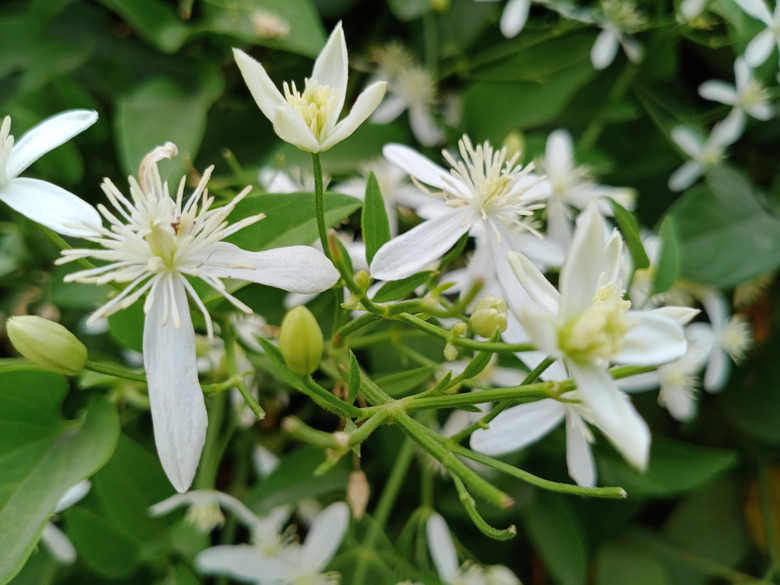In What Months Do Night Blooming Jasmine Bloom?
Night blooming jasmine (Cestrum nocturnum) is a semi-tropical evergreen shrub that has long been a favorite among gardeners due to its powerful and pleasing perfume that it emits while in bloom. The odor is produced from the plant's small, tubular, non-showy flowers, which repeatedly open and close at the same time.
But when can you actually expect these aromatic flowers to bloom? Night blooming jasmine repeatedly blooms from July through October in cycles that last about a week, which is when they also produce their characteristic scent.
Growth Habit and Site Selection
Growth Habit and Site Selection
Night blooming jasmine prefers full or partial sunlight and rich, organic, fairly neutral, well-drained soil. It can reach 13 feet in height, but it more commonly tops out at 8 feet tall and 6 feet wide. While night blooming jasmine is a shrub, the slender new growth of the plant is easily trained up pillars or rafters. This fragrant plant is best located where you can appreciate its scent, such as near windows or building entrances.
Tip
Though this plant grows as a perennial in USDA Zones 9 – 11, you can enjoy this beautiful bloom year-round in cooler climates in a container that you bring inside when the temperatures dip.
Night Blooming Jasmine Flowers and Berries
Night Blooming Jasmine Flowers and Berries
The flowers of night blooming jasmine are slender and tubular with five triangular lobes. The sweet fragrance of the flowers attracts hummingbird moths — a nocturnal species that is the primary pollinator of the plant. Round, white berries will appear on the jasmine following the bloom. All parts of the night blooming jasmine are poisonous to humans and other mammals. Birds, on the other hand, are able to eat the berries.
How Night Blooming Jasmine Flowers Open
How Night Blooming Jasmine Flowers Open
Within most plants, flowers open as a result of a localized elongation growth to petals that is not accompanied by any other plant growth. Plants require a source of energy for cell wall loosening and expansion in order for this elongation to occur. The timing of when flowers open is most commonly determined by external exogenous factors such as duration of light and darkness, temperature, relative humidity as well light quality and quantity. Night blooming jasmine, on the other hand, is believed to be influenced by internal endogenous rhythms that exert control over the plants bloom cycles.
The term "endogenous rhythm" refers to the regulatory control the plant's internal genes have over themselves, as opposed to exogenous rhythms, which are influenced by external changes such as a drop in temperature or light level. Consequently, even when placed in an environment where light and temperature are held constant, night blooming jasmine will still bloom in a regular cyclic manner. Within nature, the bloom and odor cycle is synchronized to initiate every 24 hours during the summer from July through October. In an artificially controlled setting, night blooming jasmine will bloom longer in low temperatures, like those experienced on summer nights. Conversely, the bloom cycle is reduced when temperatures are raised to a level more akin to daytime summer temperatures.
References
- Journal of Experimental Botany; Flower Opening and Closure: A Review; Wouter G. Van Doorn; August 2003
- American Journal of Botany; Endogenous Rhythm in Opening and Odor of Flowers of Cestrum Nocturnum; Lillian Overland; May 1960
- Floridata; Cestrum Nocturnum; Steve Christman; December 2007
- University of Connecticut: Cestrum nocturnum L.
- Hawaiian Plants and Tropical Flowers: Cestrum Nocturnum – Night-Blooming Jasmine
